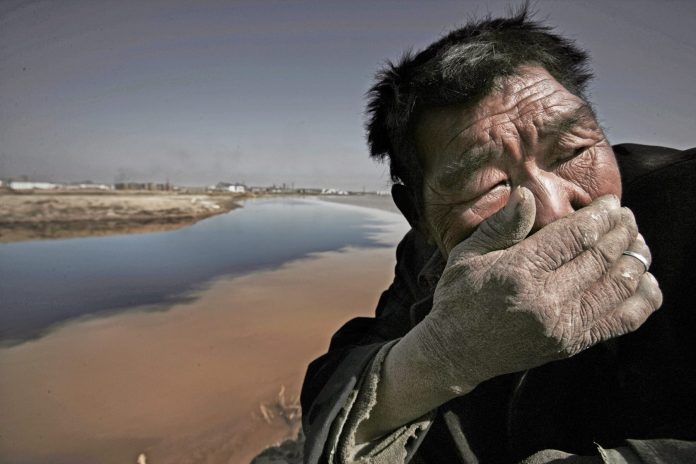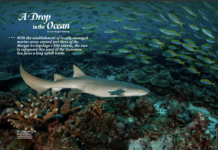The effects of human overpopulation – in pictures
Text Alex Campbell
Photos Courtesy of Speak Out
As Mahatma Gandhi once said, “The world has enough for everyone’s need, but not enough for everyone’s greed.” The size of the human population – currently at an estimated 7.4 billion people – sets the scale of human behaviour and its concomitant environmental impact. According to a United Nations report, the human population could reach 9.7 billion by 2050, and over 11 billion by 2100, but it could be anywhere between 6.7 billion at the low end, and over 16 billion at the high end.
Put plainly, it seems unlikely that Earth could sustain a population of 11 billion, let alone 16 billion. Add to that the vast disparities in the consumption of resources among the billions of people on the planet: At least 2.5 billion of the 7.4 billion people living on Earth today desperately need more material resources if they are to escape poverty and achieve minimally acceptable standards of nutrition, housing and sanitation.
And yet, in many parts of the developed world, we are consuming wantonly and unsustainably. A minority of our population is consuming far beyond their basic needs, while the majority scramble to survive on the bare minimum.

Cue the Global Population Speak Out campaign, an online, crowd-directed effort to jump-start the conversation about overpopulation, approaching the problem from an optimistic viewpoint, with the conviction that global population stabilisation can be achieved by realising a progressive human rights agenda. The NGO sponsors of the Speak Out project are the US-based Population Institute and Population Media Center. The former educates policymakers and the public about population, and seeks to promote universal access to family planning information, education, and services. The latter is a non-profit leader in entertainment-education dedicated to women’s rights and empowerment, population stabilisation, and the environment.
Speak Out’s goal is to equip young learners, professional activists and citizens with tools to help spread environmental and social-change messages. The campaign rallies volunteers from all over the world to work in their communities to raise awareness on the importance of stabilising human numbers. Since 2008, the campaign has had participants from virtually every country on Earth.
The message of Speak Out is driven by global sustainability: Their objective is to match aggregate human consumption to the sustainable yield of the planet’s renewable bio-capacity. To achieve this, they stress that “total resource extraction, production, and consumption need overall reductions, and a restructuring within the scaled down totals to contribute to social justice imperatives”.
The 2015/2016 Speak Out campaign partnered with The Foundation for Deep Ecology to publish a photo book called Overdevelopment, Overpopulation, Overshoot (OVER). The editorial team gathered the most compelling images from around the globe that show both the human and ecological sides of the overpopulation story.
Tom Butler, editor of OVER, shares his guiding message for the book: “To me, the common theme is one of what dominion looks like. Whether that desire to control is targeted at the Earth, as viewed in a clear-cut forest or tar sands development or sharks killed in a net of an industrial fishing boat, or targeted at people, as in the images of young girls given into marriages with men three times their age. These images represent loss of beauty and potential, for Nature and people.”

Butler admits that the book visually alludes to numerous touchy subjects, from gender relations to abortion rights and immigration policies. “There are pressures both from the right and left of the political spectrum not to talk about it,” he says. “And so, mostly, people don’t, merely talking about the consequences of population growth and consumption.”
Butler says that while there is no shortage of data, demographic information and policy documents on human population and consumption, these are not targeted at reaching the masses in any meaningful way. “We wanted to jump over those rational arguments and go right to the emotional part of the brain in readers of the book,” he explains. “Can you look at these images of the Earth as transformed by human numbers and behaviour and not feel an emotional connection? The point is to get people to care, and then start talking and acting to support change.”
In keeping with the campaign’s positive outlook, focusing on a dystopian future is not the aim of OVER, although documenting the current realities facing the planet is prudent to raising awareness. To this end, Butler has included an afterword by environmental author Eileen Crist that crafts a positive vision of what the world might be – beautiful, diverse, and filled with life.
“Doing the right thing for people in high fertility countries – empowering women, educating girls, and making family planning tools universally available – is morally justified and ecologically beneficial,” Butler says. “That is a pretty good story to tell.”
For more stories and photographs from the issue, see Asian Geographic Issue 123, 2017











